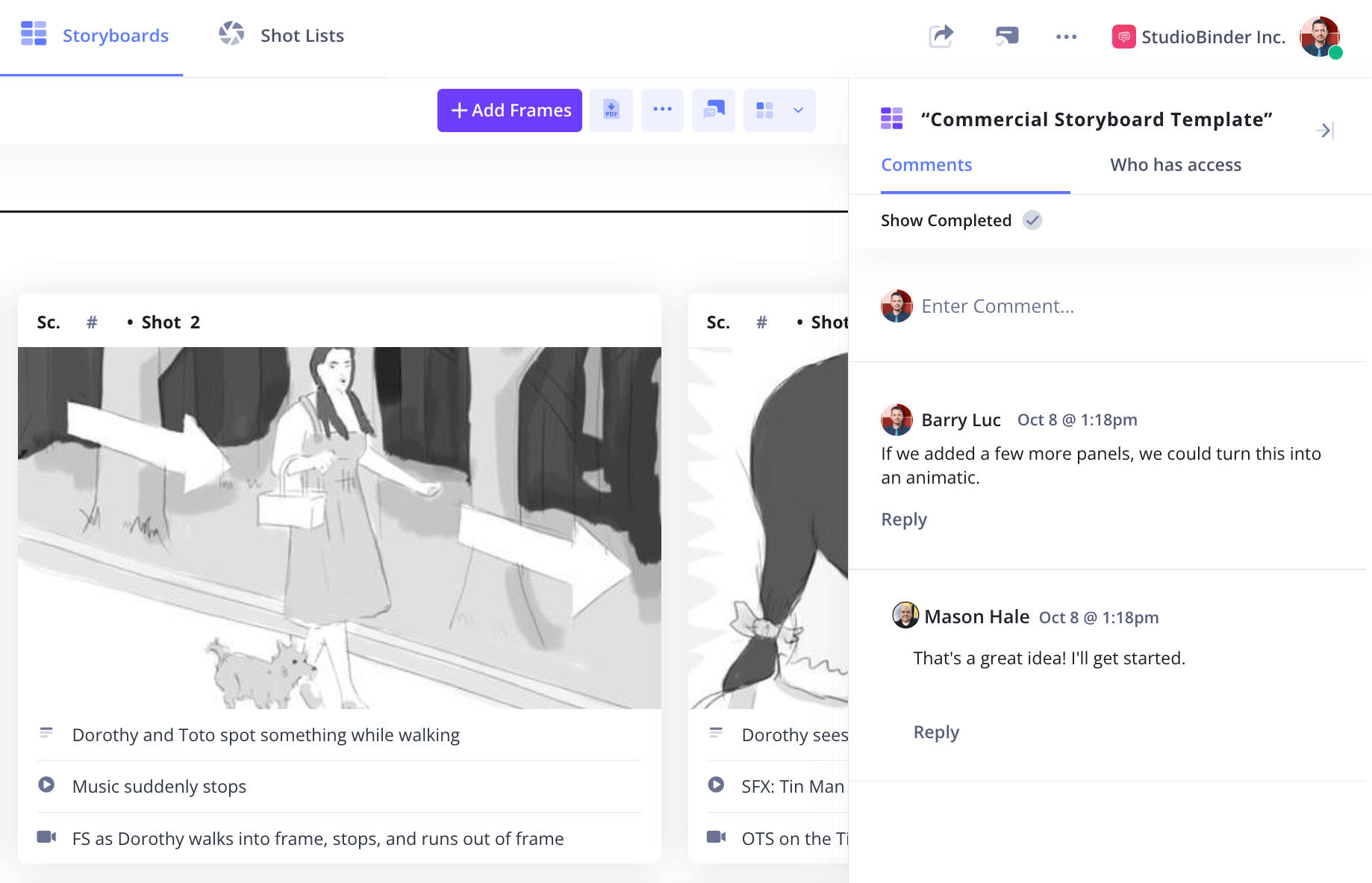home → TEMPLATES → Storyboard
Commercial Storyboard Template
Design your commercial storyboard
A commercial storyboard template is an essential tool for production teams, serving as a visual script that guides directors, cinematographers, and editors through each shot. It also helps clients visualize concepts before investing resources, ensuring a clear understanding of the final product.
In this guide, we’ll walk through the step-by-step process of creating a commercial storyboard, using StudioBinder’s storyboard creator as an example. Whether you’re using dedicated software or a simple pen and paper, these steps apply universally.
Steps in this guide
1. Decide your presentation format
2. Read the script or treatment
Step 1
1. Decide your presentation format
Before diving into specifics, select a commercial storyboard template that suits your project’s needs. Storyboard templates vary, offering two to twelve panels per page. Commercials often move at a faster pace than films or TV shows, so templates with more panels per page can be useful for capturing rapid sequences.
Commercials usually have a faster pace than films or TV shows, so you may even opt for templates with more panels per page to capture the action at a quick pace.

How to do this in StudioBinder
- Switch between different view types and aspect ratios seamlessly.
Step 2
2. Read the script or treatment
Your script or treatment is the foundation for your storyboard. Identify the key goals of each shot—whether it’s highlighting a product, featuring a celebrity endorsement, or advancing the commercial’s narrative.
For example, a product hero shot might be best captured with a low-angle, tight close-up to emphasize the brand’s presence.


How to do this in StudioBinder
- Import your script and automatically generate blank storyboards.
- Tag each line and create panels as you visualize the script.
Step 3
3. Create or find images
Populate your storyboard with relevant visuals. You can:
- Sketch images yourself
- Hire a storyboard artist
Use high-quality stock photos or pre-existing commercial images Ensure that your visuals align with your brand identity and the overall vision of the commercial.


How to do this in StudioBinder
- Quickly upload images and sketches.
- Reorder images by simply dragging and dropping them.
Step 4
4. Include descriptions and annotations
Storyboards serve as a reference for both production teams and clients, so adding detailed descriptions enhances clarity. Elements to consider:
- Shot descriptions (e.g., camera angles, shot sizes)
- Arrows to indicate camera movement
- Annotations for key visual details


How to do this in StudioBinder
- Add descriptions, dialogue, and visual details effortlessly
- Utilize annotations like arrows and text for enhanced clarity.
Step 5
5. Share and collaborate
Collaboration is crucial when developing a commercial. Share your commercial storyboard with team members and clients to gather feedback and refine the vision before production begins.


How to do this in StudioBinder
- Share via view-only links for easy access.
- Collaborate with the comments feature directly on the storyboard.
Step 6
6. Print your storyboard
Once your commercial storyboard is complete, printing a physical copy ensures that all team members have a tangible reference during production. A well-documented storyboard keeps everyone aligned on set.


How to do this in StudioBinder
- Generate PDFs with customizable layout, style, and security settings.
Conclusion
Storyboard Complete
A well-crafted commercial storyboard template provides the structure needed to streamline production, ensuring every shot aligns with the creative vision. Although commercials are shorter than films, they demand the same level of precision and planning. By following this guide, you can create a professional, high-quality storyboard that enhances your commercial’s success.
This commercial storyboard template is one of many available options. Explore more free storyboard templates on our Templates page.